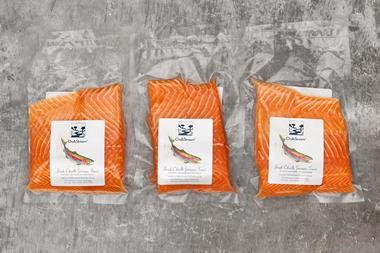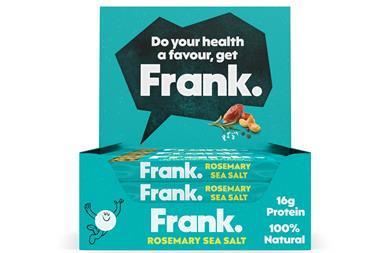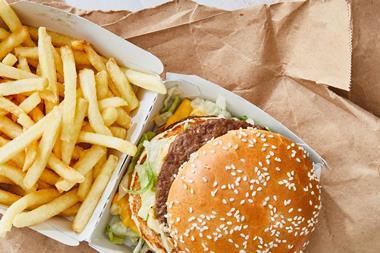Scientists and campaigners are on a mission to solve the growing global food allergy epidemic. What progress has been made? And what are the hurdles still to overcome?
It’s estimated that as many as 250 million people around the world may now be suffering from food allergies. In Australia it’s now classified as a disability. And despite widespread cynicism and even mockery, it’s getting worse: in the UK, hospital admissions from food-induced anaphylaxis have more than doubled in the past 20 years [NHS], while almost half of adults with a food allergy say they’ve suffered a reaction to incorrectly labelled food at some point, according to a survey of 5,000 people by Allergy UK.
For the most unfortunate, the consequences are lethal. In England and Wales, food allergies kill about 10 people each year, says the Food Standards Agency. These tragedies often lead to reflection and calls for change. During the recent inquest into the death of James Atkinson, who died from a peanut allergy after eating a takeaway pizza ordered through Deliveroo, his parents reiterated calls for mandatory allergen information on all menus.
It’s becoming a depressingly familiar pattern. A person dies; an inquest sets out to learn lessons; often the lessons lead to functional change. And yet the deaths keep coming. “It’s unbearable to see children dying,” says Nadim Ednan-Laperouse, who founded The Natasha Allergy Research Foundation (NARF) with his wife Tanya after their 15-year-old daughter Natasha died from eating a Pret a Manger baguette in 2016. “They die because of foodservice errors, they die because of communication errors and cross-contamination.”
And they’re still dying, despite the successful lobbying of Nadim and Tanya that created Natasha’s Law, introduced in 2021 to ensure that pre-packed products for direct sale were required to list all ingredients. It’s why they’re still campaigning. As one of the fastest-growing epidemics in the world, the threat is greater than ever, and protections are still inadequate, he argues. “The response historically from the [food] industry is to suggest that those affected need to take alternative measures. But if you have food allergies affecting this many people, can you really say people should eat at home? Something needs to be done.”
But the aims of the NARF don’t end with greater regulation. It wants to fix the food allergen problem once and for all. To find the root causes and root them out. And to do so it’s scaling up its team to co-ordinate the efforts of scientists around the world, and find a way to give those with allergies assurance that their next bite won’t be their last.
But how are they going about the task? Has support been forthcoming from the industry? What progress has been made to date? And what are the biggest obstacles?
More on food safety:
-
Allergies campaigner urges supermarkets to overhaul free-from aisles
-
FSA launches new allergy warning over vegan labels
-
Dover Port accuses Defra of undermining UK food safety with border checks move
Nothing on the market
A recent series of trials has focused on immunotherapy, the process of gradually exposing patients to small amounts of allergens to desensitise their immune response. The treatment is nothing new – a 13-year-old boy with an egg allergy was the first successful recipient in 1908, with the case reported in The Lancet – yet safety concerns meant no further trials with food took place for another century.
In the past 15 years, however, a series of studies has found immunotherapy builds tolerance in up to 80% of patients with allergies to cows milk and peanuts. Typically, however, these have worked with very young children, meaning the focus has largely been on stopping allergies developing rather than treating those that already exist.
It means there’s nothing on the market in the UK for existing allergy patients. The NHS has not rolled out any treatment that reduces the risk of anaphylaxis; the only safety net is an EpiPen for when an emergency is already induced.
That’s one gap NARF is now looking to fill through a £2.2m clinical trial funded by a consortium of food businesses including Greggs, Tesco and Uber Eats. The study began last year and involves more than 200 children and young adults aged between three and 23. It aims to show that everyday foods containing peanuts or milk can be used to desensitise patients to dangerous foods. The results are due in 2025 and will be presented to the National Institute for Health and Care Excellence, the body that decides which treatments are made available on the NHS in England.
Food allergens by numbers
84%
of food allergy sufferers say it alters the whole household’s shopping behaviours, not just individuals
[Source: Tesco]
77%
of those with a food allergy say eating out causes anxiety
[Source: Tesco]
25%
The number of callers about adult allergies to Allergy UK’s helpline increased by in 2022/23 to 3,216 contacts
The treatment will likely be imperfect and somewhat precarious, however, with the evidence consistently showing food allergies return if the individual stops eating the food in question. “But this is as close to a cure as you could get,” says Hasan Arshad, the lead investigator on the trial and professor in allergy and clinical immunology at the University of Southampton. “It would change lives.”
Pharmaceutical companies have also sought to make headway, yet their success has been limited and treatment expensive. In 2020, Nestlé spent $2.6bn on Palforzia, an immunotherapy treatment for peanuts approved for the NHS, only to sell it three years later at a $2.1bn loss. CEO Mark Schneider said that while he was certain there was an unmet medical need, the company’s foray into allergy drugs had been a mistake.
The issue was that, although officially approved, Palforzia struggled to show it was worth spending £10k per year on each patient for a drug that was ultimately made using small amounts of everyday food. As a result, it remains largely unavailable in the UK, outside a few specialist centres in London.
Nestlé’s failure was cheered by those who scorned the food giant’s attempts to monetise a food-derived chronic illness. Such onlookers are hoping the Natasha trial will democratise the approach away from such companies and ensure it’s an affordable treatment for the 250 million allergy patients around the world. “We like that it’s a David and Goliath thing,” says Ednan-Laperouse. “Not embellishing just to make money.”
Hospital admissions due to anaphylaxis keep rising. Seven times as many people were admitted to hospital with a severe allergic reaction in 2000 compared with 1990. Over the next decade it doubled due to food allergies alone. And it’s risen still further in the latest decade.
The problem is modern life
What makes food allergies so unnerving is their unpredictability. No other chronic condition can take someone from healthy to unconscious in minutes – triggered entirely by items most people have in their kitchens.
And more people than ever are at risk. About 3% of Brits now have a diagnosed food allergy, says the FSA, though the actual figure could be higher, it admits. A recent Tesco survey of 2,000 adults found it closer to one in three. And the list of allergens themselves is also growing, Tesco’s research found.
But scientists are also searching for preventative treatments that address the root cause of allergies in our modern lifestyles.
“The problem is that thanks to cultural evolution – urbanisation and many fantastic innovations – we’re disconnected from our evolutionary roots,” says Tari Haahtela, professor emeritus of clinical allergology at the University of Helsinki. “We eat ‘dead’ food, drink dead water, breathe dead air and touch dead surfaces.”
Back in 2011, Haahtela became the first scientist to posit the “biodiversity hypothesis”, an idea that links the world’s rapidly declining biodiversity to the surge in allergies. The concept arose from a 20-year study in Karelia, a region split into Finnish and Russian territories after the Second World War. Haahtela and his team found allergies were much more common on the Finnish side, where more marked environmental and lifestyle changes had taken place. By contrast, in Russian Karelia, despite having almost identical genetics to those in Finland, hay fever and food allergies in schoolchildren were almost non-existent.
“We eat ‘dead’ food, drink dead water, breathe dead air and touch dead surfaces”
Tari Haahtela, University of Helsinki
Last year, Haahtela published the results of a 10-year nationwide study in Finland that turned the biodiversity hypothesis into practice, advising enhanced contact with nature, healthier diet, supporting breastfeeding, and the introduction of solid foods from four months old.
The results were impressive. The number of children on special allergy diets fell by almost half inside two years, as did the number of days in hospital due to allergic responses. Financially, the health benefits translated to €1.2bn in savings in both direct healthcare and indirect disability costs.
Haahtela recognises that most of us will not be returning to our ancestors’ rustic lifestyles any time soon, but he maintains we must strive to return nature to our cities. “Sell more fresh fruits, vegetables, and roots in the grocery stores,” he urges. “Educate people to make their homes green. Put our hands in soil. Swim in natural waters.”

It’s now well established through 30 years of research that rural lives lead to lower rates of allergies. In 2009, a study in China found children in Beijing were three times as sensitive to allergens as their counterparts in rural areas outside the city.
This is “the farm effect,” says Erika von Mutius, director of the Institute of Asthma & Allergy Prevention at the Helmholtz Centre in Munich, who found that spending just 20 minutes a day in a cow shed in the early years of life is associated with an 80% lower risk of allergies.
One hypothesis for this trend is that the bacteria found there creates a diverse microbiome in the respiratory tract and gut, which in turn produces more of the specialised white blood cells that help the immune system know which substances are true threats. A similar theory suggests that if protective microbes are missing, the gut barrier weakens, and food proteins can enter the bloodstream to potentially trigger an allergic response.
But it’s not just urbanisation behind the weakening of the modern microbiome. More antibiotics, more babies born by caesarean section, and more highly processed, low-fibre foods are all contributing factors. The question now is what to do about it. “We cannot bring the cows to the city, so we have to learn the mechanism and how nature does it,” says von Mutius.
Several clinical trials are underway to try and induce the microbiome back into a more protective state. In the US, Pareto Bio is developing a live microbial product to treat food allergies, while in Australia, Prota Therapeutics is combining immunotherapy with a probiotic to target peanut allergies. Introducing foreign microbiomes is not without risk, though, with several patients dying following infections linked to stool transplants.
![Nadim and Tanya Lab Coats[31] copy](https://dmrqkbkq8el9i.cloudfront.net/Pictures/480xany/5/2/3/318523_nadimandtanyalabcoats31copy_568231.jpeg)
But the various avenues of progress have instilled a sense of hope. As with most diseases, the idea of an outright ‘cure’ might be impossible, but major steps could still be taken to cut the number of people susceptible to food allergies as well as better protect those who are.
It’s also worth remembering there’s nothing inevitable about their presence. Allergies are almost non-existent in parts of rural China, South Africa, Poland and Mongolia, as well as Amish communities in the US. One thing these communities have in common is that they live in greater harmony with nature. The key for those of us existing elsewhere is finding a way to rediscover what we’ve lost.
Food allergies are a global problem not a UK one

UK:
There are an estimated two million-plus people living with a diagnosed food allergy in the UK, though the numbers may be higher. Just under half (48%) of consumers say they, or someone in their household, avoid at least one food/ingredient; with 16 to 24-year-olds (61%) most likely to report household avoidance of foods/ingredients.
Source: Food Standards Agency; Food Allergy Research & Education

EU:
>150 million Europeans suffer from chronic allergic disease. The current prediction is that by 2025, half of the entire population of Europe will be affected with allergic disease.
Source: European Academy of Allergy & Clinical Immunology

US:
32 million Americans have food allergies, including 5.6 million children under 18. That’s one in 13 children, or roughly two in every classroom. About 40% of children with food allergies are allergic to more than one food.
Source: FARE




















No comments yet